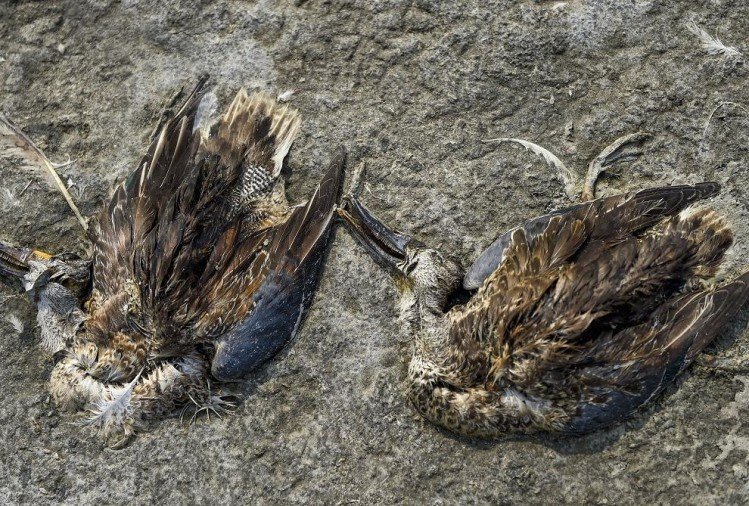Rajasthan’s Sambhar Lake has become a curious case of deaths of the migratory birds. It’s been reported that over 18000 carcasses of birds have been found scattered on the edge of the 12 km catchment area. Birds were seen floating dead in the lake. Sambhar Lake is among the eight worst-rated wetlands in the country when it comes to ecosystem management. The dead birds which included plovers, common coot, black-winged stilt, northern shovelers, ruddy shelduck, and pied avocet among many other migratory birds, were seen floating in this largest inland salt lake.
The experts of Rajasthan Veterinary and Animal Sciences University Bikaner have expressed the possibility of Avian Botulism where the infection is not spread from bird to bird, rather through maggots (a soft-bodied legless larva of a fly or other insect, found in decaying matter). Ingestion of maggots from the carcass of an infected animal can continue the spread of avian botulism, which may be responsible for large kills of birds. Avian botulism has been recognised as a major cause of mortality in wild-birds since the 1900s.
Outbreaks of avian botulism occur only when a variety of particular environmental factors occur concurrently. This typically involves warmer water temperatures, anoxic (oxygen-deprived) conditions and adequate levels of the bacterial substrate in the form of decaying plants, algae or animal materials. Avian botulism typically results in paralysis – this results in the infected species exhibiting unusual behaviour. For example, water birds may not be able to hold their head up and as a result, often drown.
“The bacteria from the dead birds spreads the disease, Avian Botulism. First it paralyses the leg and then the wings, resulting in eventual death of the bird. These symptoms have been found in dead birds’ legs and as most of the species died are non-vegetarian,” said Prof A K Kataria.
The situation gets grave owing to the reason that many bird carcasses are in the lake’s vicinity which pose a serious risk to the health of other birds.
The rapid deaths of birds have concerned the environmentalists and ornithologists. Earlier, 60000 birds visited the lake in a year, which has come down to less than 20000. Sambhar Lake has become the deathbed of the migratory birds. Harsh Vardhan, a renowned environmentalist, told IANS that, after witnessing drought for many years, this year, the lake brimmed with water due to heavy rains. The inflow made the water toxic due to the change in its alkalinity. The excessive salt in the water led to the poisoning of birds, causing hypernatremia, which is water deprivation due to sodium intoxication. It seems birds which came in high numbers due to high water quantity this season died due to hypernatremia after consuming their feed, which is the planktons, the microorganisms found in water.
Rajasthan CM Ashok Gehlot called for a meeting to review rescue operations that are going on to save the species in the lake area and gave instructions to the collectors of Jaipur, Nagaur and Ajmer districts through video conferencing. The move by CM Ashok Gehlot comes post the menace has been done. Has he taken it before, and tighten his control over forest secretary and chief wildlife warden such deaths would have been curbed.
The attention given by media on this issue is also not enough. Avian deaths are a warning of the harm on the natural habitats of the species. Rising temperatures, changing vegetation and extreme weather conditions have hit birds hard. The media needs to take this as a sensitive issue in order to generate awareness.
